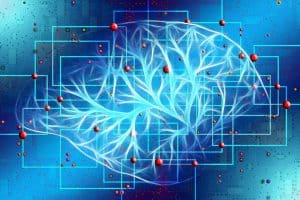
Businesses must move to a data and analytics architecture approach that incorporates diverse data and delivers analytics everywhere.
Continuous intelligence (CI) makes use of streaming data that must be analyzed on the fly. This is a significant change from traditional analytics approaches of the past, where data would be captured, stored, and analyzed at another time. The real-time analysis of data to derive action-taking CI requires different thinking about how data is managed and moved throughout an analysis workload pipeline.
See also: Infrastructure Architecture Requirements for Continuous Intelligence
Most businesses are overwhelmed by the volume, variety, and velocity of data they now must use to support normal business processes. Today, data is streaming from clickstreams, logs, Internet of Things (IoT), social media, smart sensors, and numerous video feeds. Most sources of data are external and often cloud-based.
Complicating matters is the fact that analytics of such data sources is not limited to certain domains or departments. It is not just C-level managers checking operations, today analytics being applied everywhere. And with CI, the analysis is no longer some batch process that’s run once a month or week but runs all the time and in real-time as the data is being streamed.
These changes force businesses to move to a new data and analytics approach that incorporates diverse data and delivers analytics everywhere. While some businesses are capturing all data in hopes of uncovering some new insights leading to possible actions, others are starting developing data and analytics architectures that manage processes end-to-end to produce actionable insights.
Essentially, old approaches managed data, derivation of insights, and actions based on those insights as discrete, siloed efforts. Now, they must be fused into one architecture. That architecture must merge these three operational areas and integrate everything into a tight system that automates all actions.
Elements of such an architecture must address:
- Data acquisition: Businesses must take into account the fact that data now is generated from numerous external sources
- Data organization: Make use of techniques to connect to data as needed, rather than collect it all in a single source
- Analysis applied where it makes the most sense: Is the analysis done where the data is generated (e.g., image analysis applied to video streams to guide an autonomous vehicle), or is the data backhauled to a data center or cloud instances for analysis?
- Derivation and delivery of insights: Is the analysis used to complement human activities with just-in-time insights, embedded into business processes, or used to feed algorithms that analyze data as it streams into the business and automatically takes action on the results?
Addressing CI Data Challenges
CI requires real-time availability of data. Gartner predicts that by 2022, more than half of major new business systems will incorporate CI that uses real-time context data to improve decisions. Moreover, Gartner also predicts that augmented analytics that uses machine learning and AI techniques will transform how analytics content is developed, consumed, and shared.
Having real-time data available for event processing has often been a challenge. Businesses often lack robust information architecture that can take advantage of the data. They need mechanisms to bring the data into the right place for CI to apply machine learning and AI to gain insights. Often, as businesses consume and drive insights with collected volumes of data, merging operational transaction data (such as customer, product, or accounting data) with high-volume data streams (smart devices, social media, web interactions). Such a combination of data is critical for contextual insights and improved decision making.
To gain value from analytics efforts and drive artificial intelligence at scale, businesses must capture information with low impact to systems, deliver those changes to analytics and other systems at low latency, and analyze massive amounts of data in motion.
To build that robust information architecture for AI, organizations should start by accomplishing two things:
Data integration: Businesses need the right data integration capabilities. Such capabilities can facilitate streaming analytics, feeding of diverse data sources, and make use of machine learning and AI.
Data integration technologies help businesses capture and deliver critical dynamic data across an enterprise to expedite better decision making. Critical characteristics needed include the ability to consume, transform, and deliver data wherever it resides.
Up-to-date availability of data is essential to make the right decisions at the right time, minimizing latency. With data being delivered in the most efficient and effective way possible, organizations can deliver incremental changes with very low latency to the target systems to drive CI.
The right AI-infused analytics solution: With real-time data, businesses can start to analyze that data to determine what is happening in their businesses, why it’s happening, and predict what happens next. Hitting the mark for fast and accurate decisions requires that analytics tools instantly turn data into relevant insights, giving the right people the right information at the right time and removing any obstacles.
Traditional business intelligence (BI) solutions have no hope of making sense of the volume, variety, veracity, and velocity of data being created. Harnessing this flood of business data requires a new approach to BI, enabled by embedded AI.
Moving Up the Analytics Chain
Addressing these issues, businesses can realize the benefits of CI. With CI, the range of analytics capabilities available goes well beyond traditional data reporting and analysis. Businesses can move from traditional descriptive and diagnostic analytics to predictive and prescriptive capabilities.
As such, CI can be used for decision support and decision automation. These are applications where time is of the essence.
CI used for decision support helps businesses and people make decisions on how to respond to events that may be rapidly changing. The derived intelligence complements the actions a person or business would take. So rather than making a decision based on a gut feeling (a change in market conditions, for example), CI would provide the information to pick the right decisions and back up the decision. General application areas for CI in business include risk assessment, research, target marketing, sales acceleration, revenue growth, finding opportunities for funding business growth, and increasing operational efficiencies.
CI used for decision automation takes things to a higher level. Actions are taken without a person involved based on the derived information. CI for decision automation has many benefits. It offloads work from people; it is a faster, less expensive way to operate than relying on human decisions; it ensures more consistent decisions, and it can guarantee better compliance by following predetermined policies.
In the end, such capabilities are only possible when a data and analytics architecture is in place that can accommodate the different streaming data sources and embedded analytics.







